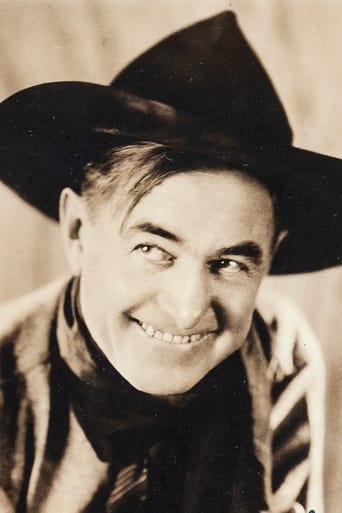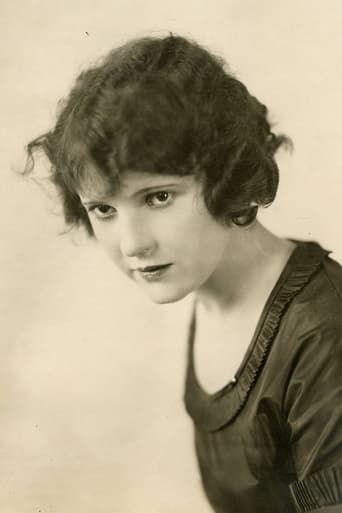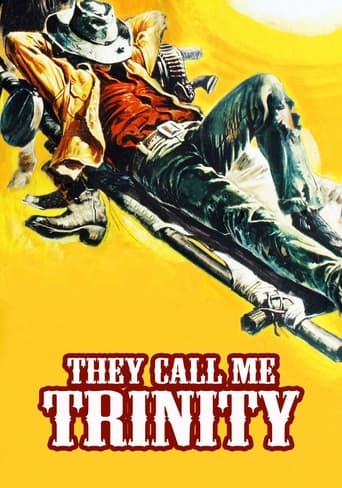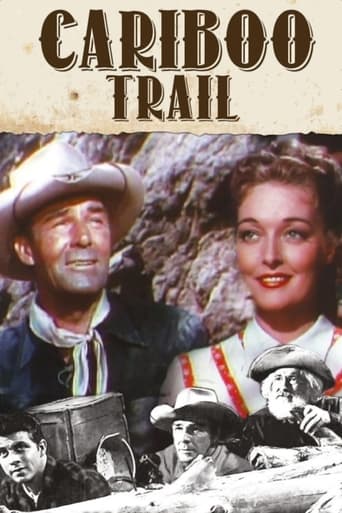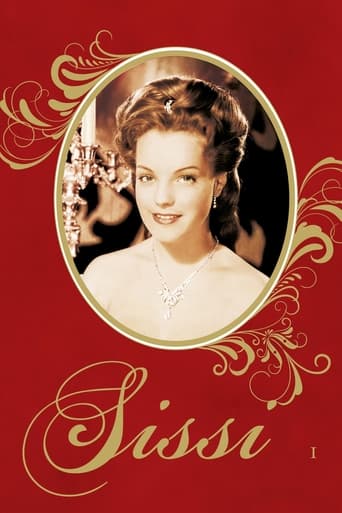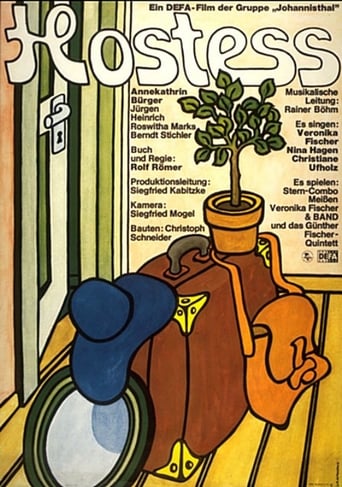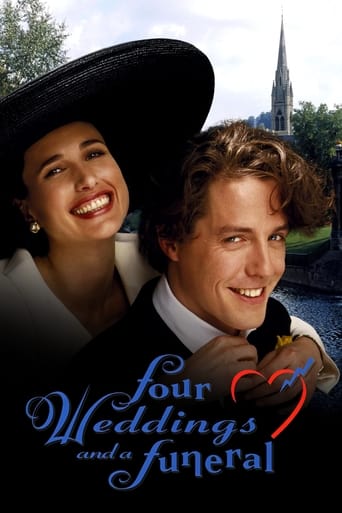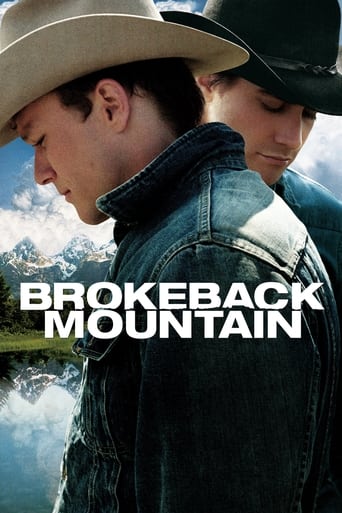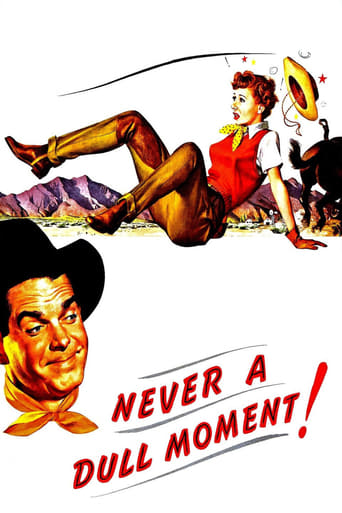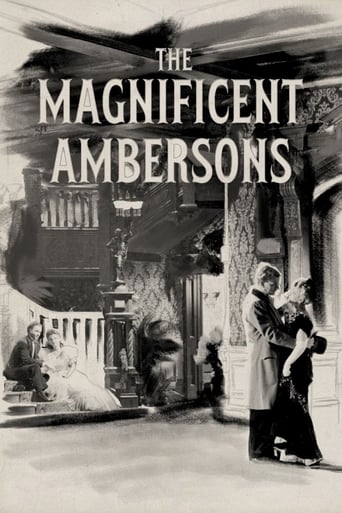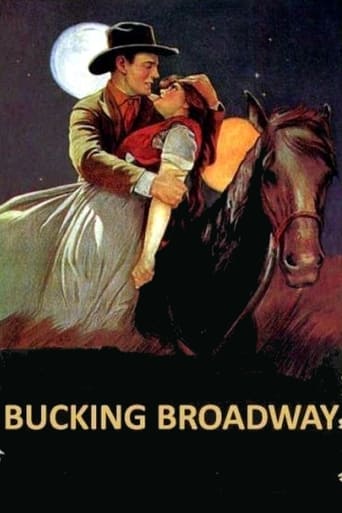
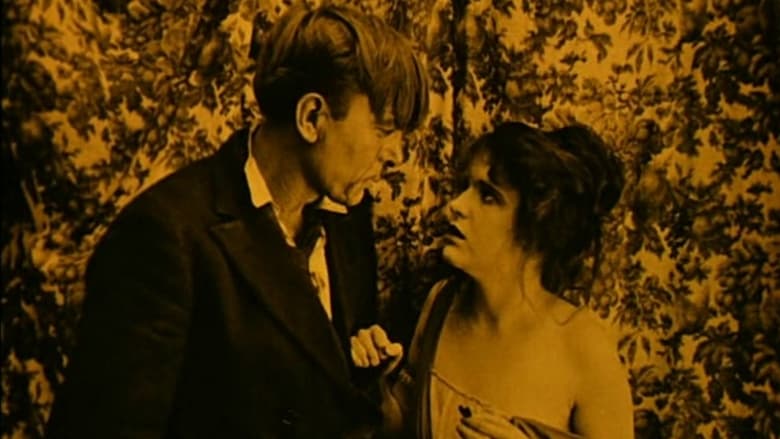
Bucking Broadway (1917)
On a ranch in Wyoming, one of the cowboys, Cheyenne Harry (Harry Carey), falls in love with his boss's daughter. But she decides to elope to the city with Captain Thornton, a wealthy visitor to the ranch. She quickly discovers that life in the city is not what she expected. Cheyenne, devastated by the loss of his fiancée, decides to go to the city to find her, and in the end rescues her from the grips of Captain Thornton and from the extravagant and decadent way of life in the city.
Watch Trailer
Cast
Similar titles
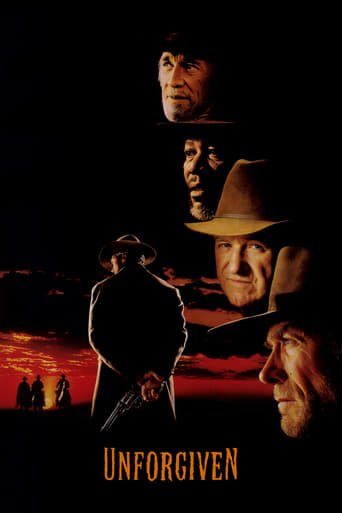
Reviews
Must See Movie...
everything you have heard about this movie is true.
This is one of the few movies I've ever seen where the whole audience broke into spontaneous, loud applause a third of the way in.
One of the worst ways to make a cult movie is to set out to make a cult movie.
. . . that he's too eager to settle for "sloppy seconds" as BUCKING BR0ADWAY draws to its soggy close. Harry Carey as Sheltered Buckaroo "Cheyenne Harry" seems to blow his chance at Happiness with his One True Friend, a nameless New York City pick-pocket\hooker. Maybe his fickle one-time fiancée Helen Clayton is the only fish in Harry's native Wyoming sea, but after a week sleeping on an East-bound slow train with a brutish drunken womanizer named Eugene, Helen's clearly Damaged Goods. Back in the early 1900s Harry would have lacked a solid Public School grounding in Sex Education, so he's in no position to judge the difference between a dog-eared "country gal" (with an emphasis on that first syllable) and a state-of-the-art Pro in Good Working Order. While there's about an 80% chance that Helen's harboring Gene's Fetal Alcohol Syndrome bun in her oven, Harry's Soft-Hearted but helpful strumpet no doubt has used all the tricks at her disposal to stave off pregnancy during the five decades before she'll have The Pill at her disposal. One can only hope that there's a post-Big Brawl "Rest of the Story" here, in which Harry wises up, swears off Wyoming, and makes the chick who's been Around the World his First Lady.
Bucking Broadway (1917)*** (out of 4) Considered lost for many decades, a print of this film would eventually show up in a French vault and making it one of the earliest films by John Ford to survive. In the film Harry Carey plays Cheyenne Harry, a simple cowhand who asks the woman (Molly Malone) he loves to marry him. She says yes but a few days later a city man (Vester Pegg) comes to town and steals her heart with a bunch of lies. She runs off to NYC with him before learning what a jerk is so it's up to Harry to show up and save the day. At just 52-minutes there's quite a bit wrong with this film including the middle sections that pretty much bring the thing to a complete halt. The scenes involving the city man wooing the girl were pretty bland and boring in my opinion and I think the scene with all the cowboys crying was pretty over dramatic as well. Outside those scenes this is a pretty good little Western that has the perfect mix of action and comedy. The scenery early on is downright breathtaking as Ford clearly showed his ability even at an early age to pick beautiful locations and do them great justice on the screen. You can't help but want to pause the film just so you can admire some of the terrific location shots here. Another major plus is some rather nice bits a comedy that are added in the second part of the film when the cowboy heads to NYC and doesn't understand too much about the city. It's even funnier when his friends show up and start a major fight with some of the city folks there. Carey was one of the biggest Western stars out there and it's pretty easy to see why. He's got that certain look that the best of the best had in this era and he's also quite believable in the tougher spots. You can't help but believe he's going to beat the crap out of anyone who gets in his way and that's always a plus. Malone is pretty good in her role as well but the character is so bland that you'd have to wonder why the cowboy would even bother going after her. Pegg is a delight as the city guy and L.M. Wells is good as the girl's father. Again, at just 52-minutes you'd wish that there weren't any slow spots but in the end this is a pretty solid little film that fans of Ford or just silent buffs will want to check out.
The scenario of "Bucking Broadway" is full of clichés: the Baddie dude lures the girl from the West to go East with him under the proposal of marriage—breaking her prior engagement to the good Western hero. The hero goes east to rescue her. Yet, past the story moviegoers have seen numerous times is some exceptional cinematography for 1917. There's some beautiful photography of the Western landscape, including long vistas, with hilly countryside, misty horizons and lovely compositions. The application of lighting is also quite expert, including nighttime photography and use of low-key lighting for mood. Additionally, there's a mirror shot of Helen reinforcing that she's in a reflective state of mind. And, there are some shots through doorways—a John Ford trademark from the beginning (he also had them in "Straight Shooting" (1917)).I was taken aback by the photography in this film, despite it being made by would-be great western filmmaker John Ford, because his earlier 1917 film, "Straight Shooting" was rather static and this was early in his career—filming cheap westerns at a then relatively small company. "Bucking Broadway" seems a vast improvement photographically over "Straight Shooting", if my memory serves me correctly. To be fair, "Straight Shooting" appears to have been Ford's first feature, but the advancement within one year is still impressive. "Bucking Broadway" doesn't entirely rely upon long shots, as there are a good number of close-ups. Some moments are dated, such as the aforementioned horse-breaking scene statically filmed from a long-shot stationary camera. If anything else, Ford and his cinematographers may have somewhat overused low-key lighting, such as in dark scenes where the mood is light. Nevertheless, it's a good-looking film, especially when it's set in Wyoming. Nice tinting and a quality print also help.A couple further remarks: Harry Carrey had a nicely rugged face, which is more evident here than in 'Straight Shooting' and elsewhere. His looks are comparable to the biggest silent era western star William S. Hart, and that's probably why they employed Carrey in the genre, with the screen persona of "Cheyenne Harry" (in the "Broncho Billy" tradition of having a consistent character and name).There are quite a few humorous moments in "Bucking Broadway", including the hasty, farcical brawl. Mostly, they aren't bad here, which is praiseworthy considering how often that isn't the case in comical westerns. Ford would often inject comedy relief into his films, which is a notable difference from some other early Western filmmakers, like Hart, Thomas H. Ince, or D.W. Griffith. The more important beginning here for John Ford, however, was in beginning to master excellent cinematography.
Cheyenne Harry (Harry Carey) is a ranch hand who gets engaged to the owner's daughter Molly. However, she falls for the charms of city dude Thornton and runs off to marry him. When she finds that neither Thornton nor New York City high life to be to her taste, she sends a letter to Harry, who comes to New York and rescues her with some help from the other ranch hands. A very well done movie, with a nice mix of action, drama and humor, though the beginning is a bit slow. The French digital restoration is very nice, with scratches and most other damage to the print removed. The second John Ford film after Straight Shooting (1917) known to survive.
